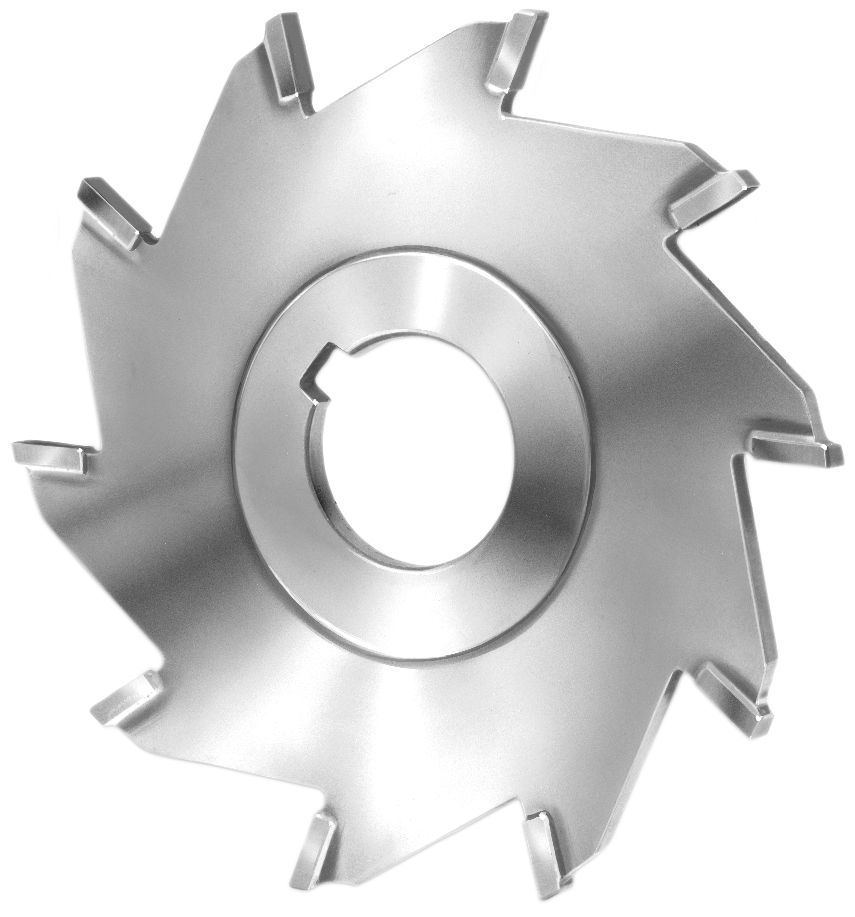No products in the cart.

In our catalog we have seven pages dedicated to carbide tipped slitting saws and side milling cutters. With so many choices selecting the correct one can seem a bit confusing. There is a method to this madness. One thing to keep in mind is that slitting saws and side milling cutters are pretty much the same thing. They are made the same and they are used for the exact same applications. The reason for the different names is that typically side milling cutters refer to cutters (or slitting saws) that are wider while slitting saws refers to cutters that are thinner. The names can be used interchangeably and frequently are.
We separate them in our catalog into three general categories in an effort to make selection easier.
Standard Tooth Slitting Saws are thin with more teeth than the coarse tooth version. They are used when a better finish is desired. Because there are more teeth the feed rate can be higher than the coarse tooth saws all other things being equal. Standard tooth saws are typically more expensive than coarse tooth saws due to the greater number of teeth.
Coarse Tooth Slitting Saws are thin with fewer teeth than the standard tooth version. They are beneficial when the finish is not as critical. Because coarse tooth saws have fewer teeth, they also have a larger flute opening that aids in chip evacuation. This allows for deeper depths of cut in materials where chip evacuation may be in issue. Coarse tooth saws are typically cheaper than standard tooth saws because there are fewer teeth.
Side Milling Cutters are wider with fewer teeth with the same benefits as the coarse tooth slitting saws.
These above mentioned categories are further broken down by the material they are designed to cut:
Non-Ferrous
Cast Iron
Steel
Stainless Steel
Made to size 3”, 4”, 5”, and 6” diameters any width between .0600” – .5312” wide. Any combination of full radius, radii and chamfers are also available. These have the same number of teeth as the standard tooth slitting saws and are available up to .531” wide. They are designed as general purpose cutters and work well on materials less than 363 Brinell (39Rc).
Tool Selection Tips:
Select the largest arbor hole that your application will allow. All of our standard slitting saws and side milling cutters are made with either a 1” or 1-1/4” arbor hole. A 1-1/4” arbor is more than twice as rigid as a 1” arbor.
Select the smallest diameter cutter that allows you to achieve your desired depth of cut. The smaller the diameter the more rigid the application will be.